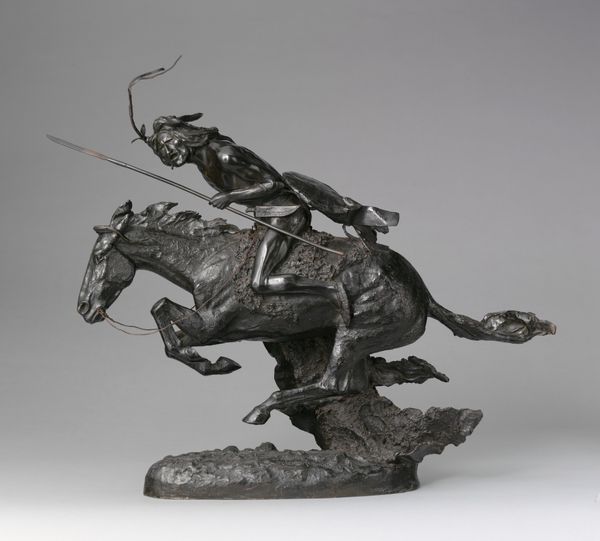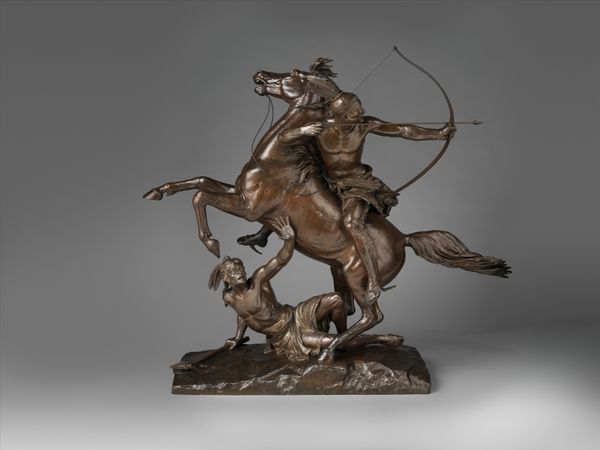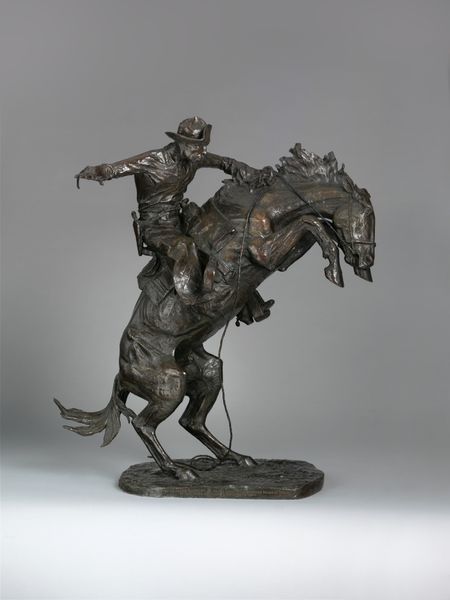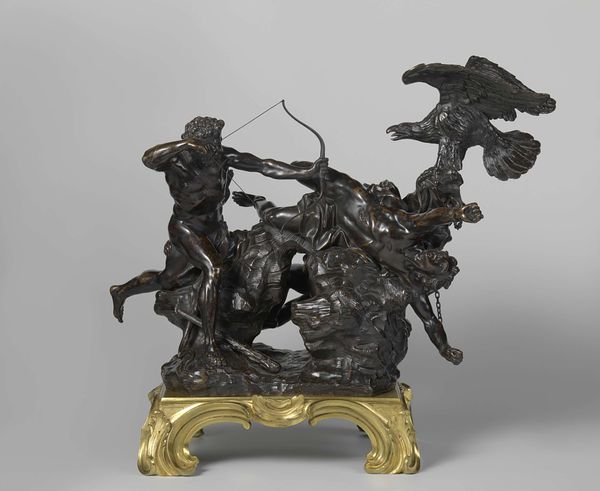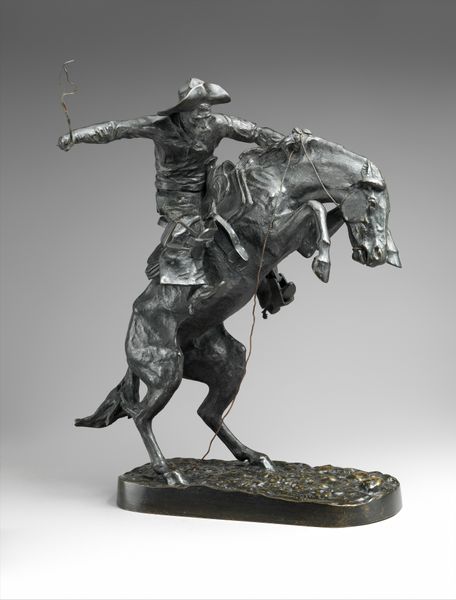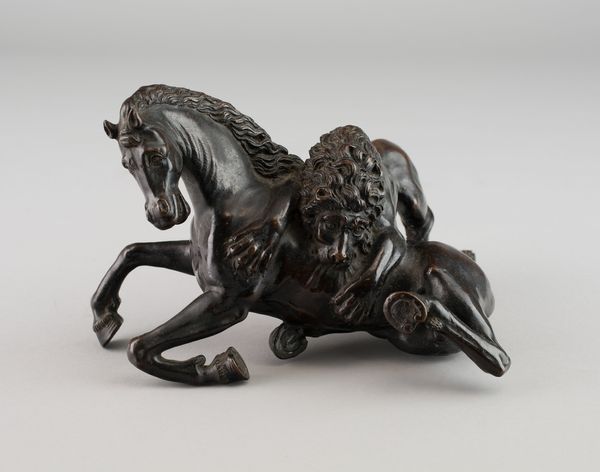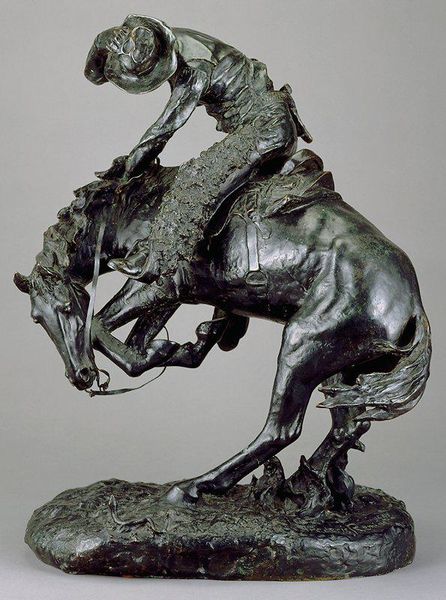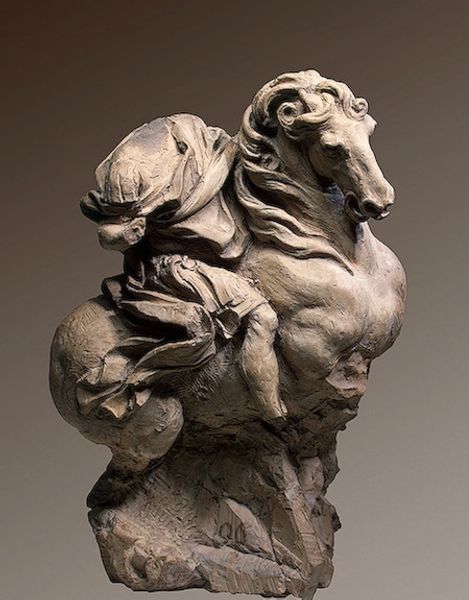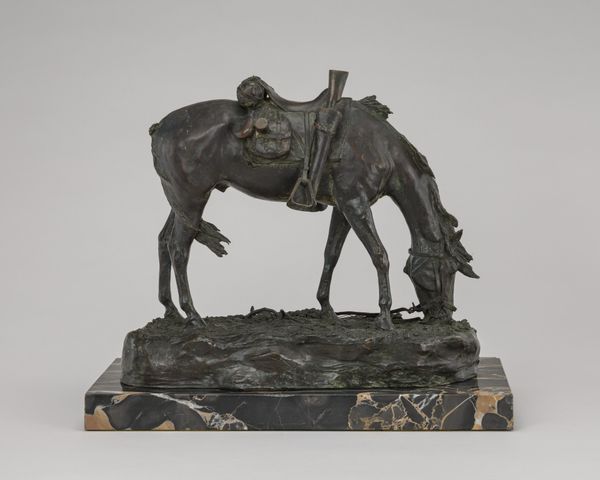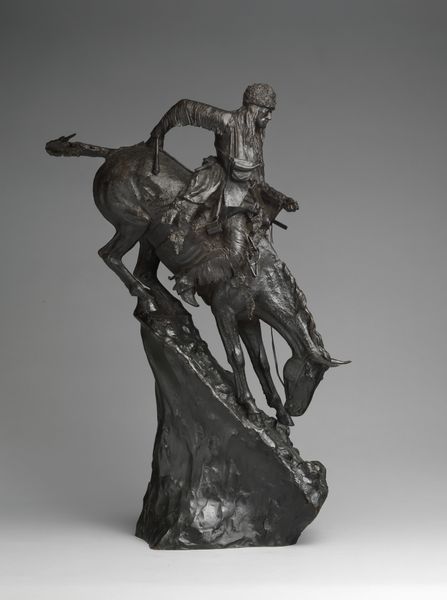
bronze, sculpture
#
sculpture
#
bronze
#
figuration
#
sculpture
Dimensions: overall: 18 1/4 x 29 3/4 x 9 3/4 in. (46.36 x 75.57 x 24.77 cm)
Copyright: National Gallery of Art: CC0 1.0
Curator: Alexander Phimister Proctor created "Indian Pursuing Buffalo" around 1916-1917. The sculpture, cast in bronze, powerfully depicts that historic scene. Editor: It strikes me as deeply kinetic. The implied movement of the horse, the hunter, and the buffalo – you can almost hear the thundering hooves and the snorts of the animals. What were his motivations? Curator: Well, Proctor's work often reflects his interest in capturing the American West. During the late 19th and early 20th centuries, there was significant public fascination with the frontier and its portrayal, partly fueled by romanticized narratives and also as a vanishing world was elegized in popular culture. He was, in a sense, responding to that social and political climate, shaping how it was visualized. Editor: The materiality seems so crucial. Bronze provides weight and permanence to a scene that was, in reality, fleeting and violent. Do we know about his method of production, the foundries involved perhaps? That texture looks exceptional. Curator: Historical records suggest Proctor typically worked with Roman Bronze Works. His sculptures reflect both naturalistic observation of wildlife and idealized representations reflecting a complex interplay of artistic intention and historical context. The heroic portrayal is tied up with issues of cultural appropriation and romanticizing colonial narratives of indigenous peoples of North America. Editor: Right, that complicates the view, doesn't it? Considering bronze’s history as a luxury material, it further transforms lived reality. We could easily reflect how the medium’s inherent qualities both reinforce the visual spectacle and underscore a market catering to privileged collectors during his time. Curator: Exactly. Viewing art requires engaging not only aesthetic dimensions but also acknowledging sociopolitical structures informing artistic creation and circulation. We can also investigate contemporary representations against changing perceptions. Editor: Seeing it like that truly deepens one's encounter with it; I appreciate thinking beyond purely an immediate visceral impact! Curator: Likewise! Analyzing it using various contexts encourages discussions concerning the intricate relationships tying art with larger historical trends.
Comments
No comments
Be the first to comment and join the conversation on the ultimate creative platform.
